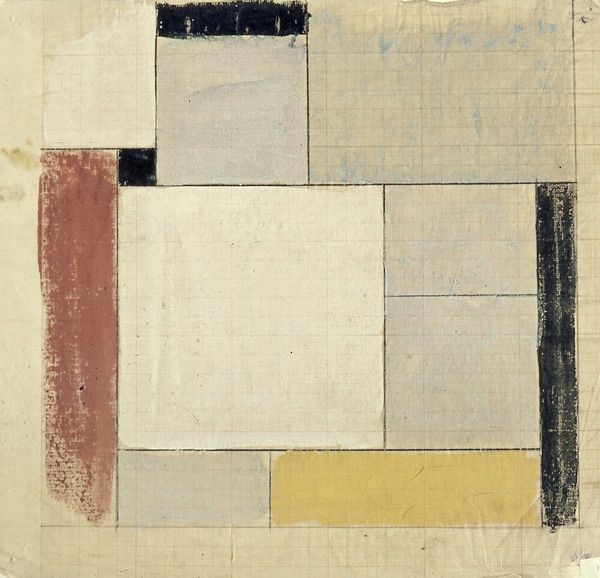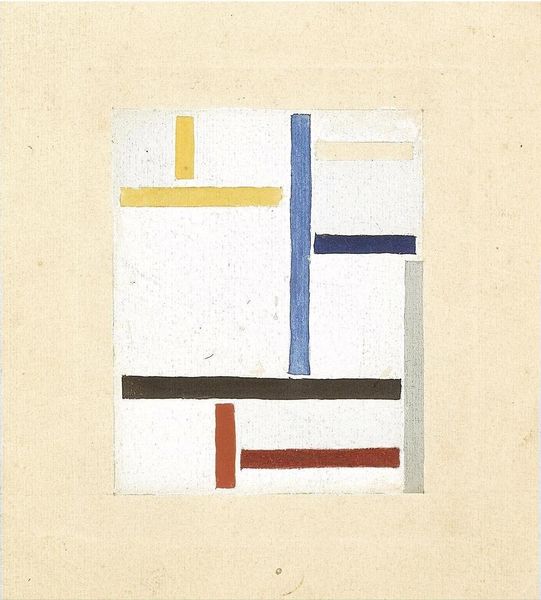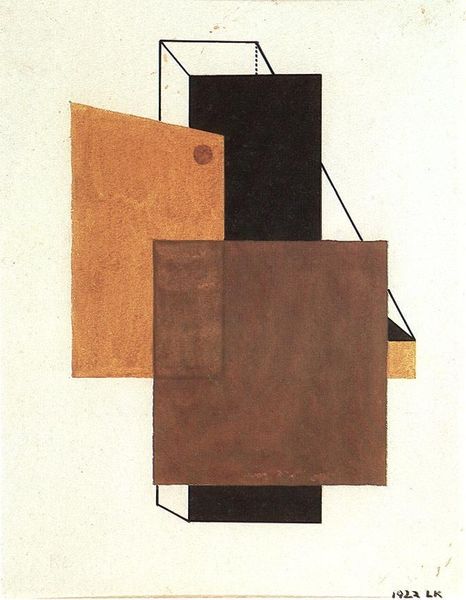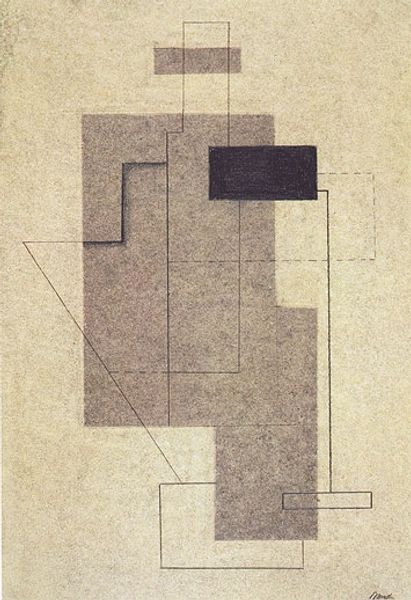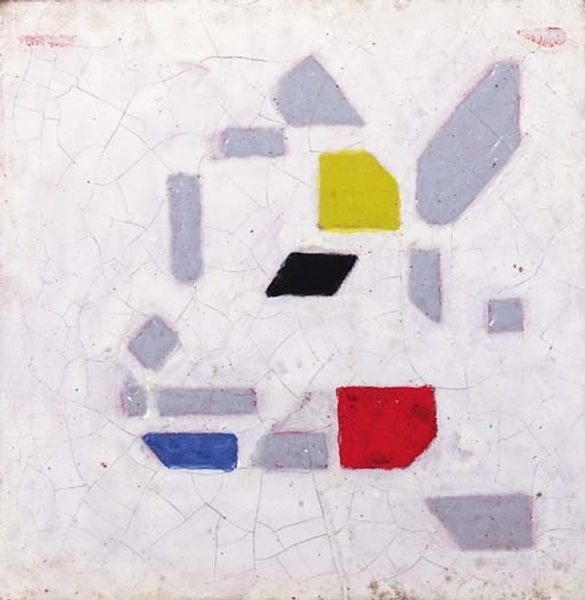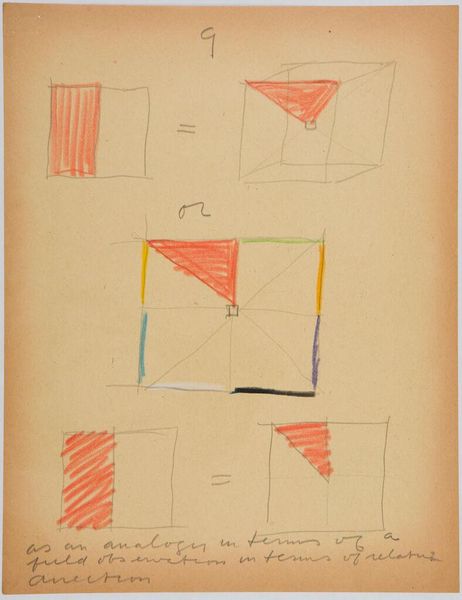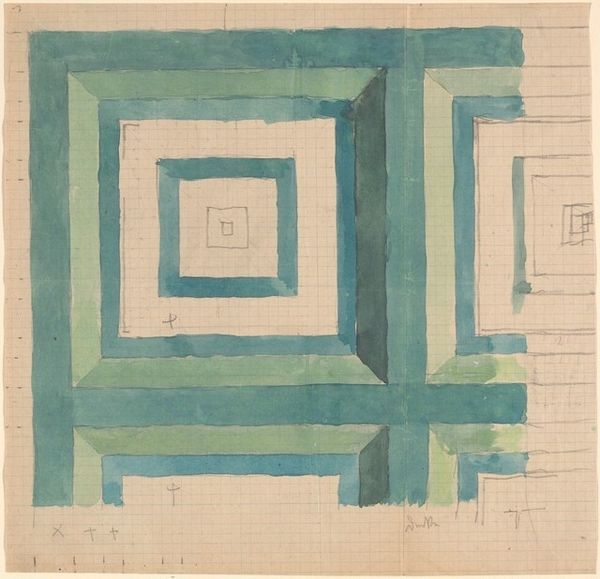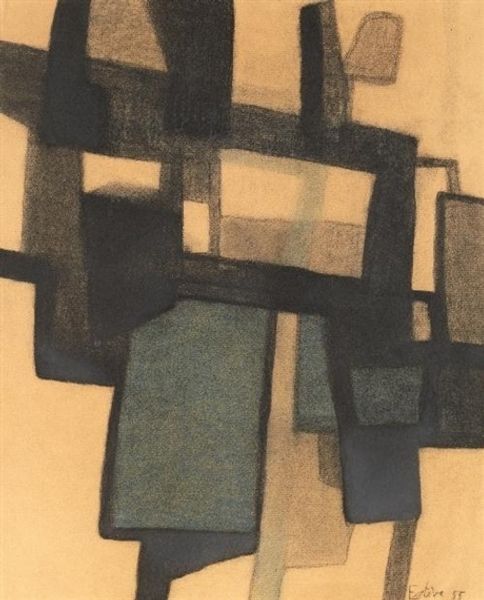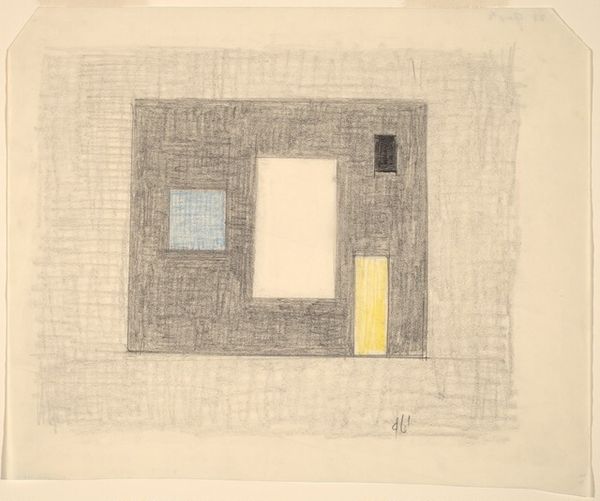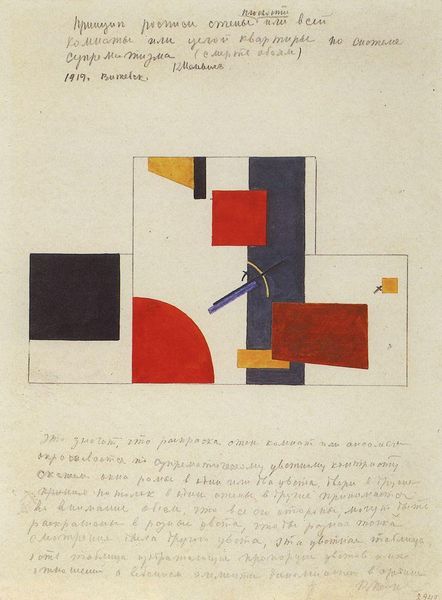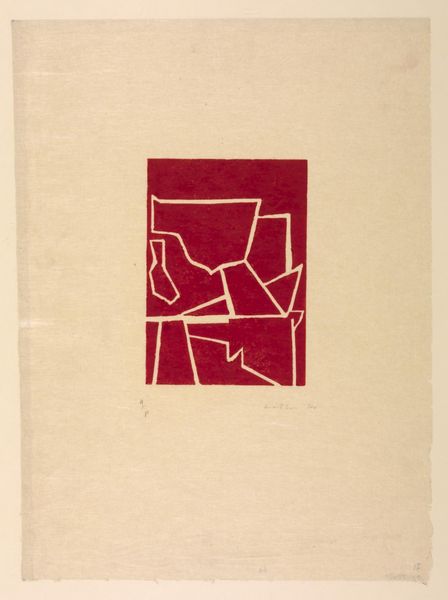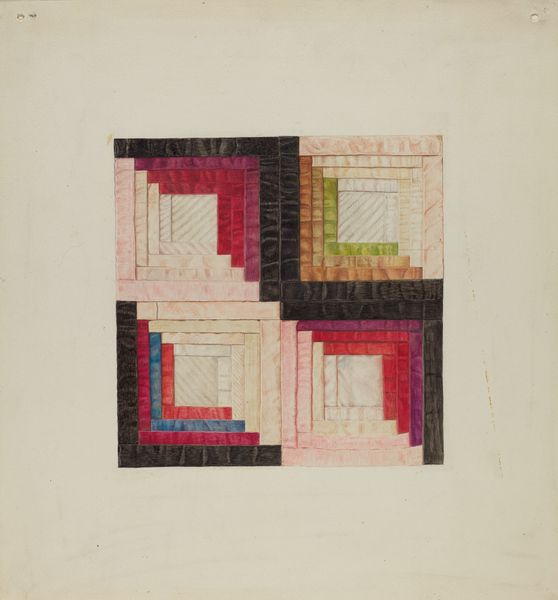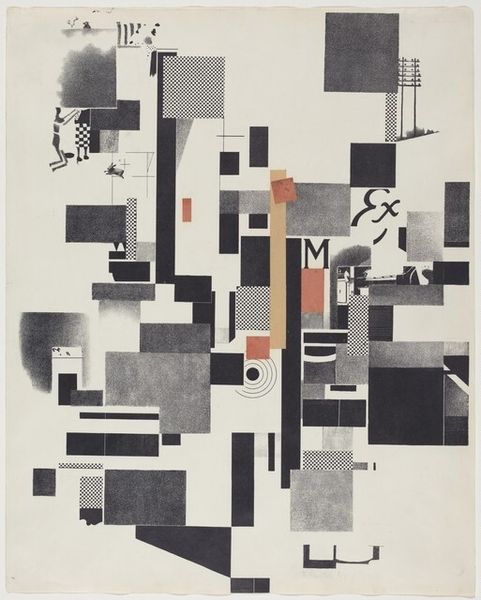
Copyright: Public domain
Curator: What strikes me first about this drawing, "Composition (Study)" from 1930 by Theo van Doesburg, is the apparent tension between rigid structure and…well, the sheer wobbly imperfection of the execution. The lines, colors, that grid…it wants to be orderly, but it isn't, quite. Editor: Yes, it almost floats, doesn't it? Those blocks of color remind me of stained glass, a distorted window filtering some unseen light. And that overlaid grid feels like the bars of a cage or, more hopefully, the scaffolding for something yet to be built. Curator: It's rendered with ink and mixed media on paper. Van Doesburg, as you know, was a pivotal figure in De Stijl, so that grid you mentioned is foundational. It’s this aspiration to distill reality down to pure, essential forms. But I see more playful gestures that betray that pure rationalist ambition. It hints at the emotional life beneath the abstract theory. Editor: Definitely. Color here functions symbolically, recalling primary forms, but also more primitive memories and shapes of the mind that feel immediate to our nervous system. Take that stark black juxtaposed with the pale, almost ghostly blue: tension. Is it shadow? Mystery? Is he pulling us into deeper reflections on form or maybe life itself? Curator: Absolutely. The squares and rectangles are basic enough, but the slightly skewed angles, the imperfectly filled colors… They seem to want to escape the constraints. There is almost a sense of controlled chaos—an embrace of asymmetry and intuitive expression. It is like an echo from personal space seeping out between his sketch book's pages. Editor: The very nature of abstraction, especially in De Stijl, sought to transcend the individual, the personal. But you're right, there's a vulnerable human touch here. You see his inner life reflected, his struggle to find stability. Those fleeting lines cutting across remind me that geometry doesn’t always offer absolute answers. It's a quest, more than a dogma. Curator: Ultimately, a really compelling sketch that's really just begging to be decoded. It's that dialogue between intention and outcome that stays with me. Editor: For me, it is the tension between order and emotion. The grid, a silent container of powerful feelings struggling to break through to a kind of release. A beautiful snapshot of the universal dance between constraint and freedom.
Comments
No comments
Be the first to comment and join the conversation on the ultimate creative platform.
